Is it a shrug? A bolero? A cape? Designer Norah Gaughan calls it a capecho. Whatever you call it, you’ll be stunned by how easy it is to make.

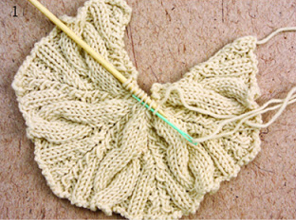
finishing pentagon #1
1. After working all the chart rows and decreases for the first pentagon, you will have 12 stitches left on the needle. Cut the yarn, leaving an end for sewing. Thread this strand through a tapestry needle and through these stitches on the needle, as shown.
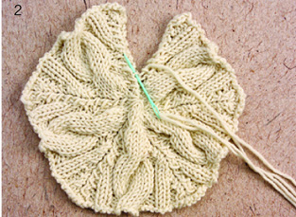
sewing up the pentagon
2. Pull the strand to gather the stitches, then use this same strand to sew the two open ends together. Insert the tapestry needle inside of the selvage stitches for a neat and even seam. Pentagon #1 is now complete.
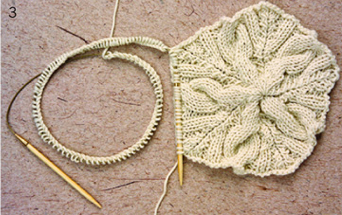
adding pentagons
3. The remaining pentagons are worked by casting on the required number of stitches and picking up the stitches along an edge of a finished pentagon. Here, pentagon #2 is shown after casting on and picking up along one of the five edges of pentagon #1. Follow the diagram in the instructions for the placement of the other pentagons.
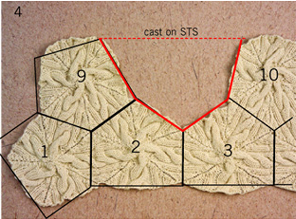
making the sleeve
4. Here is a close-up of the section where the sleeve is added. Cast on the desired number of stitches, then pick up the stitches along the side of each of the four pentagons as marked on the photo.
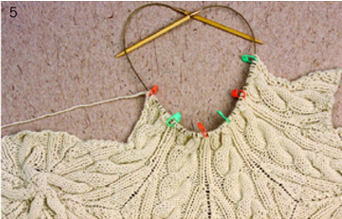
using stitch markers
5. The beginning of the sleeve is worked as the other pentagons. Using stitch markers, as shown, is helpful in keeping track of the chart repeats. When you have reached the desired width, continue to work in k2, p2 ribbing to the end of the sleeve. Then sew the sleeve seams.
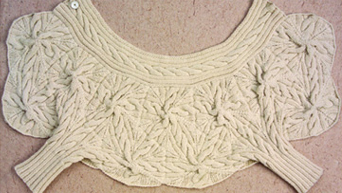
Modular knitting is surprisingly easy and quite addictive once you get the hang of it. For a longer version, continue adding rows of pentagons after you’ve completed the sleeves.
